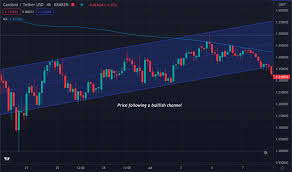Contracts for Difference (CFDs) have emerged as a popular instrument in the UK’s financial landscape, providing traders with a versatile tool to speculate on price movements across various asset classes. As traders seek to gain an edge in this dynamic market, it becomes imperative to leverage advanced techniques that go beyond basic trading strategies.
This article delves into a range of advanced CFD trading techniques tailored for UK traders, offering insights to help you navigate the complexities of CFD trading with precision and confidence.
Mastering technical analysis
Technical analysis is a cornerstone of advanced CFD trading through the best CFD broker in the UK. It involves studying historical price charts and using various technical indicators to forecast future price movements. In the UK, traders often employ techniques like trend analysis, support and resistance levels, moving averages, and oscillators to make informed trading decisions.
For instance, identifying key support levels can serve as a valuable tool for setting stop-loss orders, helping to limit potential losses. Additionally, utilizing indicators like the Relative Strength Index (RSI) or Moving Average Convergence Divergence (MACD) can provide valuable insights into possible entry and exit points. By honing their technical analysis skills, traders in the UK can enhance their ability to identify profitable opportunities in the CFD market.
Utilizing advanced chart patterns
Beyond fundamental trend analysis, advanced CFD traders often delve into complex chart patterns to gain insights into potential price movements. Patterns like head and shoulders, double tops and bottoms, and flags can provide valuable signals about market sentiment and possible reversals.
For example, a head and shoulders pattern can indicate a potential trend reversal from bullish to bearish. In contrast, a flag pattern may suggest a brief consolidation before a continuation of the existing trend. Recognizing and interpreting these patterns requires a keen eye and a deep understanding of market dynamics. Traders who master these advanced chart patterns in the UK can add more sophistication to their trading strategies.
Employing algorithmic trading strategies
Algorithmic trading involves using pre-defined rules and automated systems to execute trades. In the UK, where technology and innovation are highly valued, many traders use algorithmic strategies to gain an edge in the CFD market. These algorithms can be based on technical indicators, price patterns, or machine learning algorithms that adapt to changing market conditions.
By leveraging algorithmic trading, traders can execute trades with precision and speed, reducing the potential for emotional biases to impact decision-making. However, it’s essential to thoroughly backtest and validate any algorithmic strategy before deploying it in live trading, as past performance does not indicate future results.
Implementing risk-parity strategies
Risk-parity strategies allocate capital based on risk rather than a fixed percentage of the portfolio. This approach involves diversifying investments across different assets based on their historical volatility and correlation with one another. In the UK, where risk management is highly emphasized, this technique can be particularly effective in optimizing portfolio returns.
By allocating more capital to assets with lower volatility and less to those with higher volatility, traders can achieve a balanced risk exposure. This can help smooth out overall portfolio returns and enhance the risk-adjusted performance of CFD trading strategies.
Staying abreast of macroeconomic events
In a globalized financial market, macroeconomic events and geopolitical developments can significantly impact asset prices. Traders in the UK pay close attention to economic indicators, central bank policies, and geopolitical events that may influence the markets. For instance, significant announcements like main bank interest rate decisions or financial data releases (such as GDP reports or employment numbers) can lead to essential market movements.
Awareness of these events and their potential impact on the CFD market allows traders to adjust their strategies accordingly. It’s important to have a reliable source of financial news and be prepared to act swiftly if an event could affect your position.
Harnessing sentiment analysis for CFD trading in the UK
Sentiment analysis involves gauging market participants’ emotions and opinions to make more informed trading decisions. In the UK, traders increasingly use sentiment analysis tools and techniques to gain an edge in the CFD market. By understanding the collective sentiment of market participants, traders can anticipate market movements and adjust their strategies accordingly.
For instance, social media platforms, news sentiment indicators, and online forums can provide valuable insights into how market participants feel about specific assets or the overall market. By incorporating sentiment analysis into their trading approach, UK traders can add a powerful dimension to their decision-making process.
With that said
Mastering advanced CFD trading techniques in the UK requires a combination of technical prowess, strategic insight, and a deep understanding of market dynamics. By delving into technical analysis, employing advanced chart patterns, utilizing algorithmic trading strategies, implementing risk-parity strategies, and staying informed about macroeconomic events, traders can gain a significant edge in the competitive world of CFD trading.
However, it’s crucial to remember that trading involves risk, and profit is not guaranteed. Traders should approach the market with a well-informed and disciplined strategy, always prioritizing risk management. With a rigorous approach to skill-building and continuous learning, traders can position themselves for success when trading CFDs in England.
Also Read: How to Always Have a Reliable Trading Edge in the Stock Market


